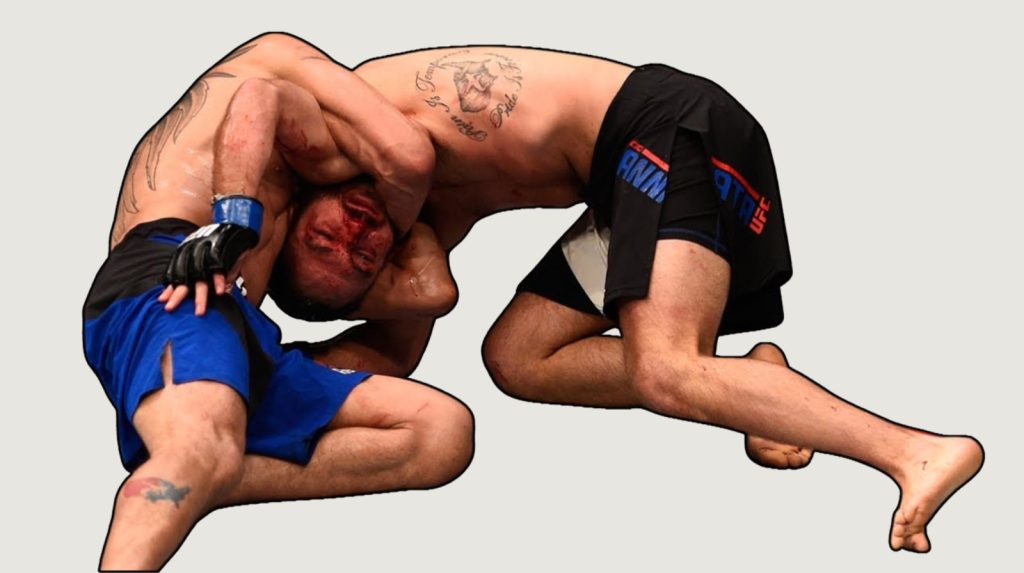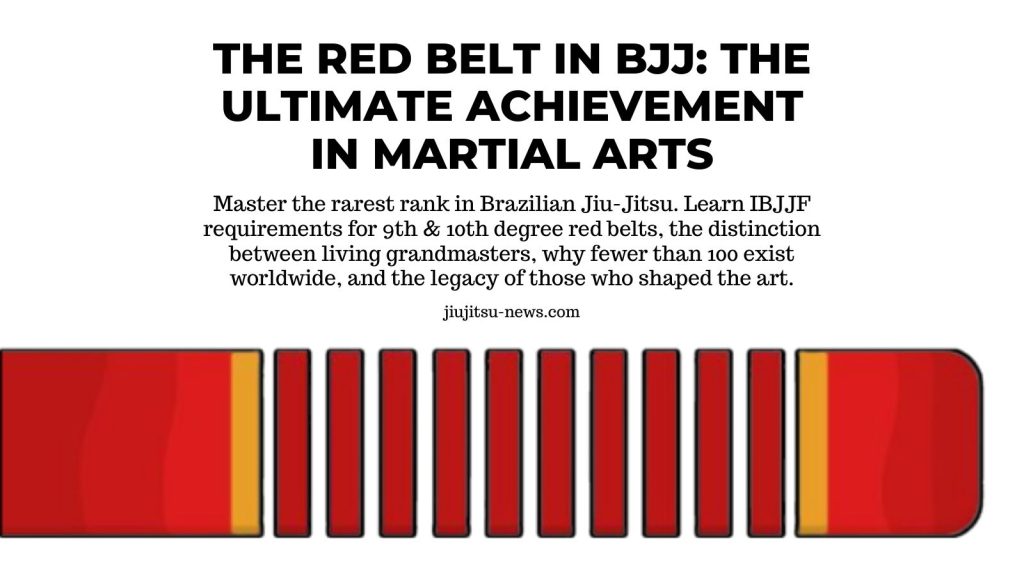The Triangle Choke: Complete BJJ Submission Guide
Master one of Brazilian Jiu-Jitsu’s most devastating submissions. Learn mechanics, variations, competition data, and advanced techniques used by elite grapplers.
Quick Navigation
The triangle choke stands as one of the most elegant and effective submissions in Brazilian Jiu-Jitsu. Used by world champions from Mica Galvão to Diego Pato, this versatile technique works from virtually every position and is devastatingly difficult to defend once properly locked.
Whether you’re a white belt learning fundamentals or an advanced competitor refining your submission arsenal, understanding the triangle choke’s mechanics and variations is essential to building a well-rounded game.
What is the Triangle Choke in Brazilian Jiu-Jitsu?
The triangle choke (or “triangulo” in Portuguese) is a submission technique where a grappler traps an opponent’s neck and one arm between their legs, applying crushing pressure to cut off blood circulation.
Originally derived from Judo, the triangle has become a cornerstone technique in BJJ, MMA, and self-defense. It’s elegant in its simplicity: your two legs and the opponent’s own arm create an unescapable three-point pressure system.
Why the Triangle Choke is Essential
- High Finishing Rate: 38% overall success rate in competition, with even higher rates in gi vs. no-gi contexts
- Position Agnostic: Available from closed guard, mount, side control, back control, and more
- Lower Belt Friendly: Effective even without perfect technique due to mechanical advantage
- Elite Weapon: World champions consistently use it as their primary submission
- Pressure-Based: Blood choke that creates rapid pressure (not reliant on arm strength)
How Does the Triangle Choke Work?
The triangle choke functions as a blood choke—not an air choke. This distinction matters:
- Compression of Carotid Arteries: Your leg pressure squeezes both carotid arteries on the sides of the neck, cutting off blood flow to the brain
- Jugular Vein Restriction: Venous blood return is blocked, creating rapid pressure buildup
- Rapid Unconsciousness: Takes 5-10 seconds of sustained pressure before the opponent loses consciousness
- Mechanical Advantage: The opponent’s own arm creates one point of the triangle, multiplying pressure
The key difference from other chokes: with the triangle, you use zero hand strength. Everything is leverage and geometry, which means even smaller grapplers can submit much larger opponents through proper technique.
How to Execute the Triangle Choke: Step-by-Step
While triangle setups vary by position, the core mechanics remain consistent. Here’s the fundamental approach from closed guard:
Step 1: Control Your Opponent’s Wrists
Begin by establishing control over one or both of your opponent’s wrists. This prevents them from defending or creating space. Common grips include:
- Gi: Sleeve grip
- No-Gi/MMA: Monkey grip or C-clamp grip
Step 2: Position Arms: One In, One Out
With wrist control established, maneuver to get one arm inside your legs (between your thighs) and the other arm outside. This can be achieved through:
- Pressing one arm into their torso while pulling the other forward
- Using collar control in gi to facilitate arm positioning
- Critical Point: This transition must be smooth and explosive—if telegraphed, your opponent will defend
Step 3: Lock Your Legs High
Once you have the arm-in/arm-out position, explosively bring your legs up and lock them near the opponent’s shoulders:
- Place one leg over the shoulder of the inside arm
- Place the opposite leg under the shoulder of the outside arm
- Key Detail: Your legs must be “high”—near the shoulders, not around the lower back
- Lock your ankles or feet to secure the triangle
Step 4: Control Head and Posture
With the triangle frame locked, use your hands and leg pressure to control your opponent’s head and posture:
- Pull their head down with your free arm or wrist control
- Use your knee to press against their neck/shoulder junction
- Prevent them from posturing up or escaping to the side
Step 5: Adjust for Perfect Angle
Before finishing, fine-tune your hip angle to maximize pressure:
- Scoot your hips closer to create a tighter triangle frame
- Adjust your leg position if needed so pressure is even
- Ensure your foot/ankle lock is secure
Step 6: Finish with Controlled Pressure
Execute the final submission with precision:
- Perform a small hip bridge to tighten the triangle
- Squeeze your legs together with consistent, relentless pressure
- Pull the opponent’s head down with your hands simultaneously
- Maintain pressure until they tap or become unconscious
Common Finishing Mistakes (Fix These!)
- Placing legs too low: Position them high near shoulders, not around the hips
- Squeezing too early: Don’t tighten until posture is fully controlled
- Losing foot lock: A small shift breaks the triangle—maintain constant ankle/foot contact
- Pulling the wrong direction: Pull the head DOWN and TOWARD you, not away
- Telegraphing the movement: Smooth, flowing transitions prevent defensive posturing
Triangle Choke Variations & Different Setups
The beauty of the triangle is its adaptability. Master competitors like Mica Galvão have multiple triangle entries for different scenarios.
Triangle from Closed Guard
The foundational version and perhaps the most effective. This is the entry that defines the technique’s geometry and is your starting point for all other variations.
Triangle from Mount Position
The mounted triangle is explosively powerful. From top mount, post one arm on the mat and swing your opposite leg high across their neck. This variation requires managing your weight distribution carefully.
Triangle from Side Control
Both top and bottom side control offer triangle opportunities. From the top, control their far arm and swing your leg across. From the bottom, create space and underhook before setting up the triangle.
Arm Triangle Choke (Head & Arm Choke)
A pressure variation where your forearm and arm create one point of the triangle rather than a leg. Extremely effective from side control and mount when the opponent’s arm is trapped.
Inverted Triangle
Setup with your hips away from the opponent’s body. Popular from side control, this variation can surprise defensive opponents since it comes from an unexpected angle.
Reverse Triangle
Performed with your legs oriented opposite to the traditional triangle. Common from turtle position and back control, this devastating variation uses your shin across the neck.
Rubber Guard Triangle
A high-level guard variation combining collar control and leg positioning. Popular in no-gi and MMA due to its offensive options and control retention.
Rear Triangle
From back control, swing your legs around and triangulate the neck. One of the most brutal variations when you have a strong seatbelt control.
Spider Guard Triangle
Breaking posture with foot-on-biceps pressure before transitioning to the triangle. Requires precise timing and solid sleeve control.
No-Arm Triangle
When your opponent escapes their arm out, adjust by threading your arm under the neck and securing a choke with both legs around their body—no arm inside needed.
Triangle Choke Transitions & Combo Attacks
One reason elite grapplers favor the triangle: it chains seamlessly into other submissions. Combinations keep opponents guessing and increase your finishing rate.
Triangle to Armbar Transition
The most natural flow. If your opponent stacks you or turns into the triangle, smoothly transition to an armbar. From guard position, swing your hips to underhook their arm and isolate it. This combo appears constantly in competition.
Triangle to Omoplata Transition
If the opponent posts their arm to prevent the triangle, rotate to attack their shoulder with an omoplata. Requires smooth hip movement and understanding the positional flow.
Triangle to Kimura Transition
Less common but highly effective if your opponent defends by flattening out. Control their far arm and transitions to a kimura grip before finishing.
Transition Strategy
The key to smooth transitions: maintain pressure and positional control. Never fully release until you’ve secured the next submission entry. This continuous pressure forces mistakes and creates openings for your follow-up attacks.
Defending Against the Triangle: Escapes & Counters
While the triangle is powerful, smart defense can prevent the finish. Key defensive strategies include:
The Early Escape (Before Lock)
Prevention is easier than cure. Before the triangle is fully locked:
- Posture up immediately when you feel your wrists controlled
- Keep your elbows high and tight to prevent arm positioning
- Maintain a wide base to prevent leg placement
- Read the hip movement—if their hips come toward you, defend before they lock
The Stacking Defense
If the triangle is already locked but not fully tight:
- Grip behind their back and stack them toward the side
- Use your shoulder pressure to create space in the triangle
- Move your neck away from the tightest point of pressure
- Caution: Stacking becomes risky once the choke is tight—tap earlier rather than risk injury
The Foot Placement Defense
Target the ankle lock to prevent the triangle from tightening:
- Once in the triangle, grip one of their ankles
- Shift your neck to the side with loose ankle lock
- Create enough space to slip your head or arm out
Most Important Defense Principle
Tap early. The triangle is a blood choke that can cause rapid unconsciousness. If you’re in a fully locked triangle with head control applied, there’s minimal time before you pass out. Smart grapplers tap when they feel the pressure building rather than waiting until it’s critical.
Triangle Choke: 2025 Competition Statistics & Elite Usage
Overall Submission Success Rate
Across all belt levels and competition formats (verified 2024-2025)
2025 IBJJF World Championship Data
Overall submission finish rate at black belt adult divisions
ADCC 2024 Data
Triangle finishes among world’s elite competitors (declining trend)
What this data reveals (2025 Update): The triangle’s effectiveness shows a clear progression: highly effective at white/blue/purple belt (38% success), strong at brown belt and IBJJF Worlds (23%), but drops to below 3% at elite ADCC level where defenses are refined and athletes understand proper early prevention. At the 2025 IBJJF Europeans, black belt finals showed a 50% submission rate overall, though triangle chokes specifically decreased compared to previous years as competitors increasingly focus on collar chokes, armbars, and leg lock innovations.
2025 Competition Trend Analysis
- Declining at Elite Levels: ADCC 2024 showed triangles fell out of the top 5 most used submissions, with only 1-2 finishes recorded
- Rising Arm Triangles: Arm triangle chokes increased to 10% of ADCC 2024 finishes, making it more popular than traditional leg triangles
- Gi Still Superior: Triangle remains more reliable in gi competition (28 finishes at 2019 IBJJF Worlds from 45 attempts) than no-gi
- Lower Belt Consistency: White-to-purple belt success rate remains stable at 38%, making it the most reliable submission at those levels
Elite Triangle Users in 2025
- Jalen Fonacier: Won 2025 IBJJF World Championship 57kg division, defeating Oziel Santos via triangle-armlock combination—showcasing modern triangle chaining strategy
- Gabrieli Pessanha: Achieved 100% submission rate (5 fights, 5 submissions) at 2025 European Championships, including victories via no-arm triangle variation
- Diego Pato: Continued elite dominance in 2025, securing multiple submission victories at black belt level competitions
- Mica Galvão: Maintains rear triangle and trap-leg variations as signature attacks in European and Pan competitions
Drilling the Triangle Choke: Build Muscle Memory
Like all submissions, the triangle demands consistent drilling. Regular practice develops the timing, angle awareness, and pressure distribution needed for reliable finishing.
Fundamental Drill: Arm-In/Arm-Out Positioning
Drill getting to the arm-in/arm-out position 10-20 times without actually closing the triangle. Focus on smooth transitions and explosive leg placement. This is where most setups fail.
Pressure Sequencing Drill
Start in a locked triangle and practice the sequence: small hip bridge, then leg squeeze, then head pull. Understand how each element contributes pressure and how they combine for the finish.
Transitions Chain Drill
String together triangle → armbar → omoplata transitions. Drill partner resists lightly and lets you flow through the sequence. This trains the smooth hip movement necessary for seamless combinations.
Triangle Choke in MMA: UFC & Modern Combat Sports
The triangle remains one of the most devastating submissions in mixed martial arts. In the UFC, triangle finishes have ended main events and determined championship outcomes.
2024 Triangle Finishes Notable Performances:
- Continued use at elite levels proves the fundamental soundness of the technique
- No-gi variations with gloves slightly easier due to reduced friction
- High guard positions create excellent triangle setup opportunities in MMA
- Rear triangle extremely dangerous in UFC due to head control implications
Frequently Asked Questions About the Triangle Choke
Is the Triangle Choke a Blood Choke or Air Choke?
The triangle is a blood choke. It restricts blood flow to the brain via compression of the carotid arteries and jugular vein, not airway. This is why it’s so effective: opponents pass out rapidly (5-10 seconds) with proper pressure, regardless of their lung capacity or air-control ability.
How Effective Is the Triangle Choke Really?
Highly effective at all belt levels below black belt. At white, blue, and purple belt, the triangle ranks among the top three most reliable submissions. At brown belt and above, success rates drop as defenses improve, but elite competitors still use it regularly. The 38% overall success rate speaks to its reliability across contexts.
Can Smaller Grapplers Finish Larger Opponents with a Triangle?
Yes—this is one of the triangle’s great advantages. Because it’s a pressure-based choke with zero reliance on arm strength, weight class matters far less than with other submissions. Perfect technique from a smaller grappler will finish a much larger opponent.
Is the Triangle Safe to Practice?
Yes, when training partners tap on time and coaches monitor intensity. Always tap at the first sign of pressure—don’t test your consciousness levels. Triangle training is safe when both partners prioritize safety and respect.
What’s the Difference Between a Triangle and an Arm Triangle?
A traditional triangle uses both legs around the opponent’s neck and arm. An arm triangle (head-and-arm choke) uses one arm and one leg, with your forearm creating the choke point instead of your leg. Both are blood chokes but use different biomechanics.
How Long Does It Take to Learn the Triangle Choke?
Basic execution can be learned within 2-4 weeks of regular training. Reliable finishing at white belt level within 2-3 months. Advanced variations and seamless transitions require 6-12 months of focused drilling and live rolling.
Conclusion: The Triangle Choke as Your Submission Foundation
The triangle choke represents Brazilian Jiu-Jitsu’s elegant principle: leverage over strength, geometry over athleticism. From white belt fundamentals to black belt refinement, the triangle remains a cornerstone submission that you’ll use throughout your entire BJJ career.
By mastering the mechanics outlined in this guide—proper arm positioning, high leg placement, posture control, and smooth finishing—you’ll develop a reliable submission that works regardless of opponent size or strength level.
Start drilling the basics from closed guard. Progress through the major variations. Chain transitions together. Practice regularly. The triangle will become your weapon of choice, just as it is for world champions like Mica Galvão and Diego Pato.
Your journey to mastering the triangle begins now. Train smart, tap respectfully, and build a submission game that strikes fear into your opponents.
The “White Belt Survival” Masterclass
Don’t just “show up” and hope for the best. Get a proven 7-day roadmap delivered straight to your inbox. Master the basics, save money on gear, and survive your first month.
What’s Inside The Sequence:
- Day 1: The truth about “getting fit” before starting
- Day 2: The Smart Gear Guide (Stop wasting $$ on bad gis)
- Day 3: The “White Belt Superpower” Mindset Shift
- Day 4: The only 4 positions you actually need
- Day 7: PLUS: The 30-Page Beginner Blueprint PDF






